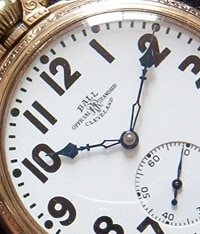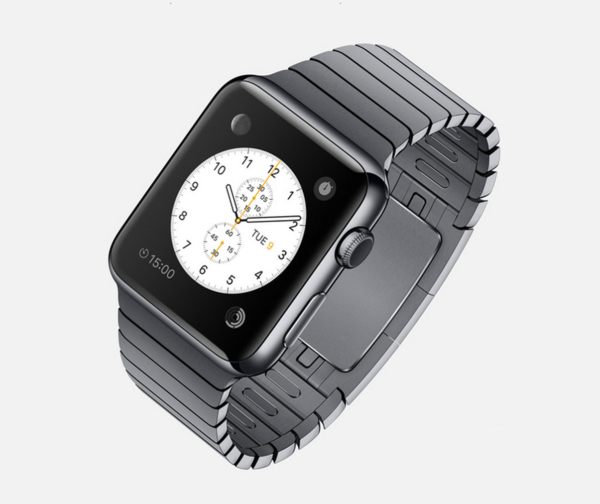The Ball Watch company is one rooted in history and tradition, dating back to the late 1800’s. Webb C. Ball, the company’s founder, was the first jeweler to adopt standard time measurement in all of his pocket watches and later in life was responsible for the standardization of time measurement throughout the watch manufacturing world. Today, Ball Watch has maintained a significant presence in the watch landscape, through superbly designed mechanical watches, with unique styling to match their historical roots.
 The story behind the founding of Ball Watch is actually quite interesting. In the late 1800’s, Webb C. Ball was a jeweler working in Ohio, known for his innovation within the watch manufacturing industry by applying standard time to his watches. In 1891, after a devastating train crash between the Lake Shore and Michigan Southern Railway, Ball was instituted as the Chief Time Inspector for the rail lines, and soon after instituted a standard time measurement throughout the rail system. Along with the system came a standard tool for time measurement called the Ball Railroad Watch. Ball Watch didn’t make any of these watches themselves. Rather, they were made by companies including Elgin, Hamilton, Howard and Waltham. The implementation of this time standard revolutionized and secured the rail system and set the Ball Watch company on its way to becoming a watch manufacturer for over the next century.
The story behind the founding of Ball Watch is actually quite interesting. In the late 1800’s, Webb C. Ball was a jeweler working in Ohio, known for his innovation within the watch manufacturing industry by applying standard time to his watches. In 1891, after a devastating train crash between the Lake Shore and Michigan Southern Railway, Ball was instituted as the Chief Time Inspector for the rail lines, and soon after instituted a standard time measurement throughout the rail system. Along with the system came a standard tool for time measurement called the Ball Railroad Watch. Ball Watch didn’t make any of these watches themselves. Rather, they were made by companies including Elgin, Hamilton, Howard and Waltham. The implementation of this time standard revolutionized and secured the rail system and set the Ball Watch company on its way to becoming a watch manufacturer for over the next century.
 Today, Ball Watches features six unique lines of timepieces, including the Engineer II, the Engineer Master II, the Engineer Hydrocarbon, the Trainmaster, the Conductor and the Fireman. All feature one of Ball’s four custom ETA movements. Another unique feature of Ball Watches is their use of tritium to illuminate their watches, which they elegantly explain on their site.
Today, Ball Watches features six unique lines of timepieces, including the Engineer II, the Engineer Master II, the Engineer Hydrocarbon, the Trainmaster, the Conductor and the Fireman. All feature one of Ball’s four custom ETA movements. Another unique feature of Ball Watches is their use of tritium to illuminate their watches, which they elegantly explain on their site.
“The BALL solution to the problem of reading time in the dark is the Self-Powered Micro Gas Lights (3H). This Swiss technology safely captures pure tritium gas in a mineral glass tube coated with luminescent material. The light is produced when the electrons of the tritium strike the luminous phosphors on the inside of the glass. Our 3H micro gas lights glow up to 100 times brighter than luminous paints for up to 25 years. They do not require charging from any outside light source or power source. The encapsulated tritium gas poses no risk to the wearer over the life of the watch.”
Ball Watch has a few watches in their current lines that I really love. There’s the Engineer II Chronometer Red Label, and the Engineer Master II Aviator GMT. And for women, I really like this Fireman. But the Ball watch that really has my attention is the Fireman  Night Train. What can I say? This watch s just stunning, and as far as I can tell its the current Ball model that has the most community following. It features a custom automatic Ball 124 ETA movement inside a 43mm, DLC coated stainless steel case, a date function and a really well implemented 24 hour indicator. Check out some photos here (my apologies for the random website). It’s a great looking watch.
Night Train. What can I say? This watch s just stunning, and as far as I can tell its the current Ball model that has the most community following. It features a custom automatic Ball 124 ETA movement inside a 43mm, DLC coated stainless steel case, a date function and a really well implemented 24 hour indicator. Check out some photos here (my apologies for the random website). It’s a great looking watch.
While Ball Watches are certainly on the upper reaches of worn&wound’s typical price range, coming in at around $2,000 for most pieces, they certainly provide the quality and design that you would expect for a watch of this value. For many of us, a $2,000 watch is aspirational, and I believe that the product Ball offers lives up to that expectation.
For more information on Ball Watch check out their website, or head over to some of the Ball forums, here or here.









 Featured Videos
Featured Videos






